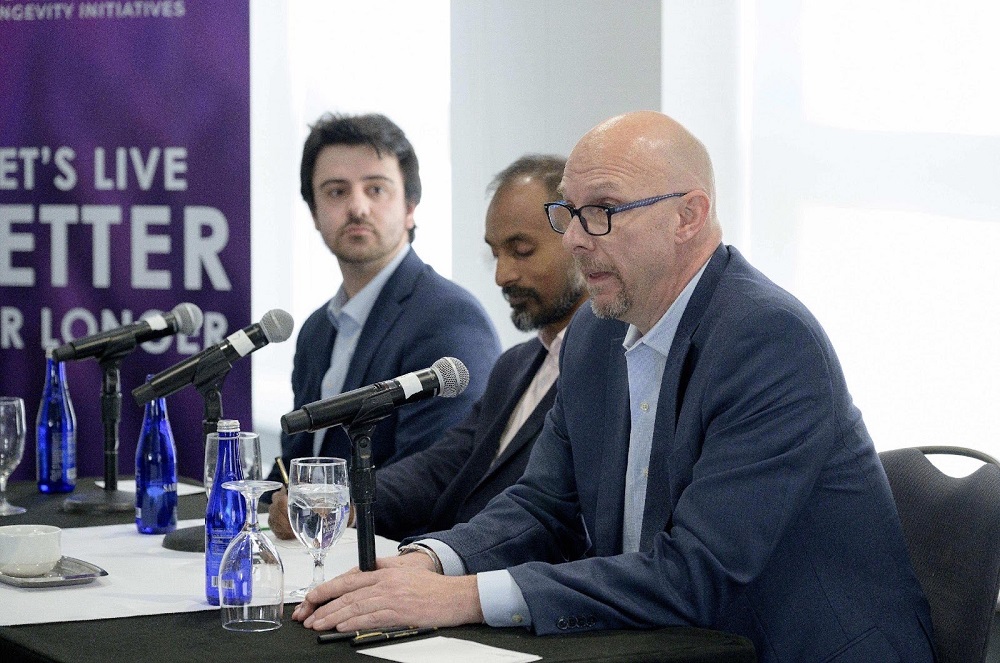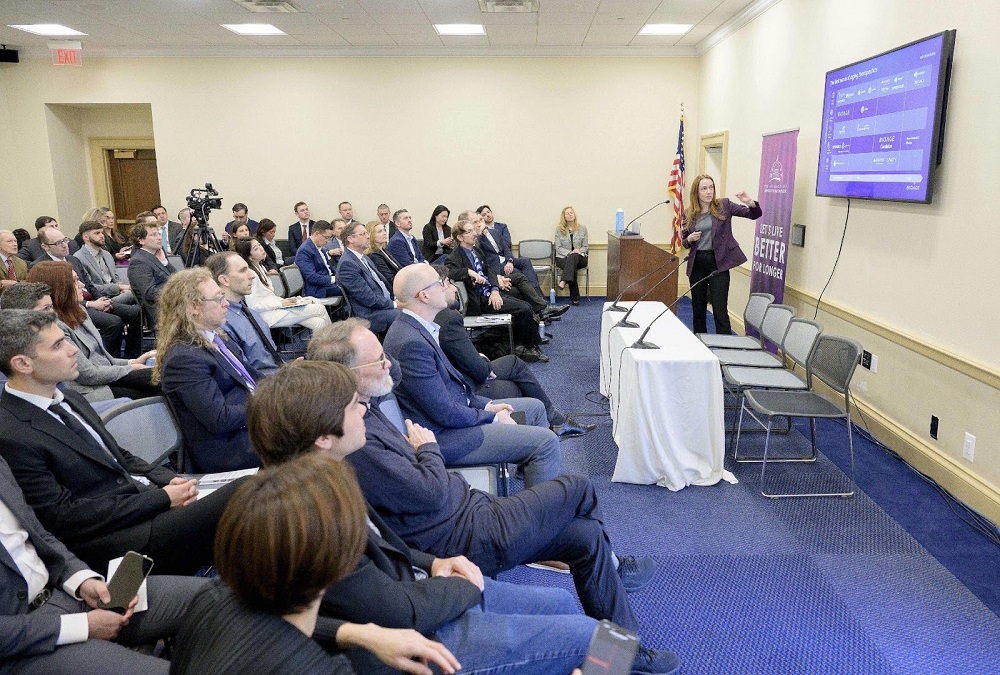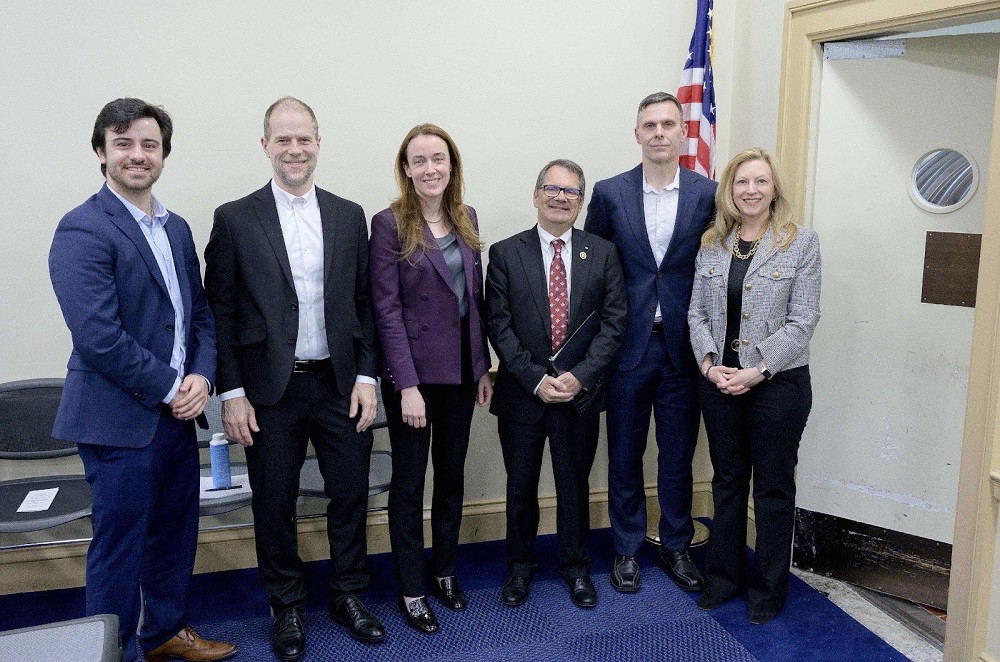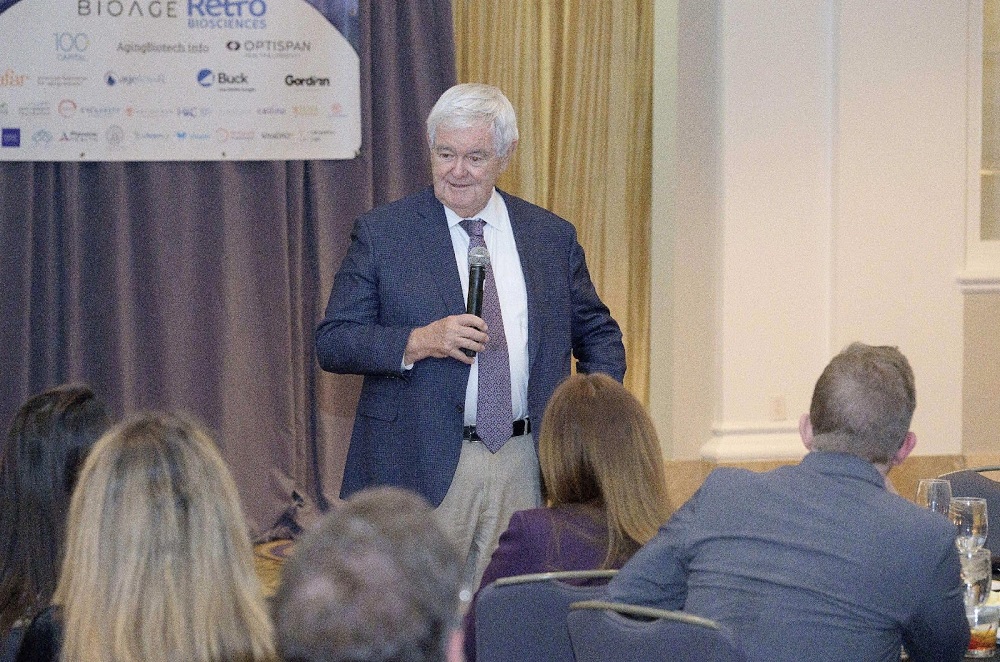The longevity community has always been a niche one, but many of its members realize this is not how we defeat aging. This goal requires immense resources as well as political and regulatory changes that can only be obtained at a national level. With all our labs, startups, and conferences, if we don’t elevate life extension to the top of the global, or at least American agenda, we don’t stand a chance.
Recently, the Longevity Biotech Fellowship (LBF) conducted a survey of experts in the longevity field aimed at identifying the bottlenecks that hamper its progress. Unsurprisingly, the lack of funding took the second place, narrowly trailing the lack of aging biomarkers.
While research into specific diseases of aging, particularly cancer and Alzheimer’s, is generously funded by the government, the basic biology of aging gets scraps: only about 300 million dollars a year from the multibillion NIH budget. Without understanding the biology of aging, how can we deal it a serious blow?
Current regulation is also skewed towards the disease-based approach. No regulatory framework exists for testing anti-aging interventions and bringing them to market.
All this is well known, but what can be done about it? Enter the Alliance for Longevity Initiatives (A4LI), a non-profit organization founded by Dylan Livingston. Lifespan.io took an active part in taking A4LI off the ground, with our president Keith Comito being a founding board member. From the start, A4LI has looked to sell the idea of longevity science to politicians, and we have been keeping an eye on the organization. For example, A4LI has played an instrumental role in the creation of the Longevity Science Caucus in Congress.
In our era of toxic partisanship, when a divided Congress is largely dysfunctional and its approval ratings are at all-time lows, this caucus is refreshingly bipartisan, led by the Republican congressman Gus Bilirakis from Florida and his Democratic colleague Paul Tonko from New York. Another staunch proponent of longevity that A4LI was able to recruit to the cause is the former House speaker Newt Gingrich.
A few days ago, A4LI reached another milestone by organizing a congressional briefing on longevity science and a two-days event around it. This was a major bet on the young organization’s part. Will it be able to attract top talent in the field to educate politicians on longevity? Will it be able to attract politicians to listen to the speakers? Will enough people pay a hefty price for the ticket and the insanely expensive DC hotels? Long story short, A4LI pulled it off and then some.
Can ARPA-H help the longevity cause?
It all began on Wednesday, March 20th with an industry discussion centered around ARPA-H, a new research agency created about two years ago and borrowing some of its design from the famous Defense Advanced Research Projects Agency (DARPA). Gathered in the historic Mayflower hotel, the longevity crowd heard from ARPA-H representatives about the organization and then grilled them about something of a misalignment between the organization and longevity.
The first two speakers, Michael Stebbins and Geoffrey Ling, have a very different background, but they both ended up near and around politics. While not politicians themselves, they know how to talk to one, and their skills were on full display. Their fast-paced, straight-to-the-point, and almost mysteriously assertive presentation style was something to learn from.
Stebbins and Lee are the godfathers of ARPA-H, although currently not directly involved in its operation. Interestingly, according to Stebbins, a geneticist by training and former assistant director for biotechnology in the Obama administration’s Office of Science and Technology Policy (OSTP), ARPA-H was almost kicked off during the Trump administration. Eventually, it didn’t happen, and ARPA-H was created with Biden in the White House.
Ling, whose career spans many years in the army, a stint at DARPA, and medical practice, captivated the audience with his energetic half-scientist, half-Marine Colonel style. “Why did we go after a new agency?” he asked. “NIH exists, Mike and I are alumni of it. Why did we do that? Very simple. I’m a practicing doctor, so I know exactly what it is to be at the bedside. I know exactly where we are in medicine. There are extraordinary advances made by NSF [National Science Foundation] and NIH that have not made it into the clinic, despite us spending 50 billion dollars a year. How come people are dying at the same rate of pancreatic cancer today as they were in 1965?”
The new agency, according to Ling, is different in that it is supposed to “do work that would fundamentally change clinical practice and patient outcomes. That’s the only metric. Are you saving lives with those people’s money? And if you are not, get off the damn phone!” Ling roared, eliciting loud applause.
The next speaker, Arunan Skandarajah, advisor to the Director of the Project Acceleration and Transition Innovation Office (PATIO) in ARPA-H, confirmed that “the mission of ARPA-H as an agency is to accelerate better health outcomes for all.” Accessibility of care is also a major criterion, apparently.
Skandarajah explained that ARPA-H is built around programs and program managers who must be skilled in company formation and treatment translation: “The ARPA model fundamentally is about holding to deliverables, and the person that matches problem to solution and then holds people to their metrics is the program manager. The fundamental part of the ARPA model is that we bring on people and empower them for three to six years. They drive progress, pushing something to an inflection point, and we hold them to result at the end of that time. This is different from NIH in that we’re transactional.”
On paper, ARPA-H looks amazing: sort of a government-run startup incubator, able to distribute fast money in exchange for concrete, feasible plans, agreed upon deliveries, and close monitoring of progress. The problem for our field is that almost none of ARPA-H’s currently running programs has any connection to aging research, as noted by Keith Comito early in the Q&A. This became a major issue in the discussion that unfolded after the speeches were over.
Ling’s passionate response seemed to strongly prioritize healthspan and compressing mortality over lifespan, which came as a surprise to the longevity-oriented audience. Skandarajah, however, struck a more reconciliatory tone: “Right now, we’re building our first portfolio. But in five, ten years, it’ll be a different portfolio. Since we started about two years ago, we went from three program managers a year ago to 17 today. And if we get to the amount that was initially advocated for, which is about 6.5 billion, we will aim for about a hundred program managers, each pushing an area. We’re still actively growing, looking for program managers, for ideas.”
Skandarajah then encouraged the audience to apply to program management positions as “the ultimate way to come in and drive an agenda for a short time and hold yourself to some results.”
“Unfortunately,” he continued, “there’s a path dependence, in terms of what people are comfortable with, but we have a mission to think big. I’m hoping we will bridge the gap soon.”
The longevity field and ARPA-H might currently not be on the same page, but it was a fruitful discussion which, as everyone agreed, should be continued. After all, this is what the fly-in was all about – establishing communication.

Left to right: Dylan Livingston, Arunan Skandarajah, Michael Stebbins
In the corridors of power
The second day started with a suit-and-tie congressional briefing on longevity inside one of the House office buildings across the road from the Capitol. A4LI recruited a team of speakers which included Kristen Fortney of BioAge, Matt Kaeberlein of Optispan and Ora Biomedical, and Joe Betts-Lacroix of Retro Biosciences. This impressive panel was moderated by Sonia Arison, longevity biotech investor and A4LI board chair. The briefing room was full to the brim with almost 80 participants – a rare feat for such an event, as I was told by an insider.
It was a busy day on the Hill, so appearances by the two Longevity Science Caucus co-chairs were brief, but the very fact of them finding time to address the room was significant.
Rep. Tonko kicked things off by highlighting the bipartisan nature of the issue of longevity. “The caucus,” he said, “was started with the goal of better educating members about the growing field of aging and longevity biotechnology and promoting initiatives aimed at increasing the healthy average lifespan of all Americans. With life expectancy in the US at its lowest in decades, we in Congress need to come together to address this decline and support science and research that will enable people to live fuller and healthier lives.”
Rep. Bilirakis spoke next, stating the fact that life expectancy has gone down in the US and is currently at its lowest level in years. “We have to reverse that, folks,” he said. “We need to invest in ways to change that, and I’m hopeful that increased investment in the NIH combined with the new ventures and ARPA-H may present hope for a better future. If we can effectively treat the aging process, this could lead to significant breakthroughs in how we approach disease states and progression of age-related conditions. If we work together, we can solve this. We can make progress that will improve patient outcomes and help people live better, longer lives. This will also save significant money in the healthcare system.”
After he finished and left the room, the remaining political part of the audience was represented by staffers, which is not something unusual. Staffers are a necessary filter for the vast amounts of information trying to reach those in power. At least, they looked engaged and interested.
Company presentations

Kristen Fortney presenting BioAge
The panel of experts clearly understood that they were speaking in front of a lay audience and did their best to convey the tenets of aging research in the most concise and approachable way. Matt Kaeberlein called geroscience “the most important area of biomedical research and translation into healthcare currently in the United States or anywhere in the world.”
He reminded the crowd that in the US, the “sickspan”, the period of life spent with one or more age related conditions, has been increasing dramatically. According to the CDC, 60% of Americans suffer at least one chronic age-related disease, and the average age when a person gets their first age-related conditions is just 38. This means that the typical American has a sickspan of at least four decades. Unsurprisingly, about 90 percent of healthcare expenditure goes towards treating chronic disease. This is clearly untenable, which makes going after aging itself instead of singular diseases the only path forward.
Kaeberlein compared our knowledge of biology of aging to a map of the Earth in 500 BC, adding that that map was still useful to travelers at the time and much better than no map at all. To hone and expand our map, we need funding, which is where politicians come in. Kaeberlein touted his company Ora Biomedical, which we wrote about recently. Ora is a unique undertaking aimed at screening vast quantities of new molecules to find those that can extend lifespan, and you can actually help the science of aging by buying an experiment.
Speaking next, Kristen Fortney presented her company, which is one of the most advanced in the field in terms of the distance to clinic. Like Kaeberlein before her, Fortney mentioned the immense amount of resources spent on the fight to slow the progression of age-related diseases: 500 billion dollars a year for people aged 65+.
“We need human data to increase translation chances and to build better biomarkers”, Fortney said, adding that this is an area in which there’s been significant progress. Prioritizing human data is an important part of BioAge’s model.
BioAge uses a realistic approach, going with the system instead of trying to radically change it – “initially going after a particular disease, where there’s one clear regulatory pathway and a commercial market at the end of the day, but where over a longer period of time there’s a potential to go after a broader category of aging.”
Fortney brought up statins, the class of cholesterol-lowering medications first approved to treat familial hypercholesterolemia, a rare hereditary disease. Today, statins “are prescribed as if they were anti-aging drugs,” she explained, marking a clear shift from treatment to prevention.
The complany’s leading candidate drug that Fortney talked about is based on the peptide apelin and is intended to help people keep muscle mass while losing weight. If successful, it can be used in combination with weight-loss drugs. Fortney ended with a call for more members of Congress to join the Longevity Science Caucus – a call that, hopefully, will get through via the staffers who were present.
After famously receiving a 180-million-dollar private investment from OpenAI CEO Sam Altman, Joe Betts-LaCroix’ Retro Biosciences went all-in with the stated mission of “extending the healthy human lifespan by 10 years.” Like the two other speakers, Betts-LaCroix explained the geroscience approach in simple terms: going after the fundamental processes of aging, so that one therapeutic will affect multiple downstream diseases.
Betts-LaCroix described Retro’s ethos as “frugal, inventive, and a little bit pirate”. For instance, to cut costs and expedite its launch, the company built a lab in shipping containers.
“Our biggest bet is on cellular reprogramming”, Betts-LaCroix said. “Fortunately, nature has already solved rejuvenation. That’s why we’re all alive today.” He referred to the phenomenon of embryonic reset, where a pristine, brand-new embryo is created from two aged cells. Cellular reprogramming has a lot in common with embryonic reset, which gives hope to the scientists and entrepreneurs who pursue this approach.
Betts-LaCroix also had a major announcement to make: in addition to its other programs, Retro will attempt to create a foundation biology model – a large-scale, deep learning model trained on vast amounts of biological data to be able to represent the underlying patterns, relationships, and principles in biological systems. The company is putting at least 50 million dollars into this effort.
Betts-LaCroix made two interesting suggestions to regulators. First, to consider not just the effectiveness of a therapy, but also its cost. This could lead to prioritizing similarly effective but cheaper therapeutics, making healthcare more affordable. Second, to create a mechanism that allows approval of therapies which affect multiple diseases (via age-related pathways), even if the effect size for any single disease is smaller than that of existing therapies for the same disease.

Left to right: Dylan Livingston, Joe Betts-LaCroix, Kristen Fortney, Rep. Gus Bilirakis, Matt Kaeberlein, Sonya Arison
When is everything possible?
At the last part of the event, a dinner back at the Mayflower, A4LI founder Dylan Livingston drew some conclusions: “We educated dozens of offices today that this morning had no idea what longevity science was, and now they’re going home filled with knowledge. More importantly, we packed that room and when Congressmen Bilirakis and Tonko stood up there to speak they saw 78 passionate longevity supporters looking to make a change. It sends a message that this is an industry ready for change and growth.”
“This is the first A4LI fly-in, definitely not the last”, he continued. “The first education campaign we’re going on, definitely not the last. The first legislative asks we’re about to make, definitely not the last. But political advocacy requires long term support. We need members of Congress to see the words longevity and geroscience a heck of a lot more than they do already. So please, if you’re a scientist, or a biotech entrepreneur, send progress to your local reps.”
Michael Stebbins who talked next announced that he was taking a role as a senior policy advisor for A4LI. “There is an extraordinary upside for the United States and this government if we start to invest in this space,” he said, referring to longevity. “We need to get a more of a continuum from the basic science research all the way through to the marketplace so that we can start improving people’s lives. We cannot rely simply on private sector dollars and private capital to fund the companies that are going to improve the lives of every single American. It doesn’t make sense.” Stebbins then called for more people and companies in the longevity space to add their voice to that of A4LI, actively engaging with regulators and politicians.
The evening also saw an improvised appearance by Ken Bogner, a Republican state senator from Montana who pushed through a groundbreaking piece of legislation which extended the right to try new therapies from terminally ill patients to everyone, given that the therapy has passed Phase 1 safety trials. Bogner told the audience he himself was amazed by the bipartisan nature of his initiative: “We ended up passing the bill with about three quarters of the votes. I looked at the vote count, and it was about the same percentage of Republicans and Democrats. It really clicked for me then that this is an issue that everyone can get behind.” Bogner, who is running for Congress, is hoping to pass this legislation nationwide.
Finally, we got to see the star of the evening: Newt Gingrich. The 80-year-old former Speaker of the House, who symbolizes for many the dawn of the current divisive era of partisan politics, was amiable, knowledgeable, and overall fun. As if to dispel the stereotype, he talked mostly about his bipartisan side, like when a welfare reform his party passed got support from “literally half of the Democratic caucus”.
Gingrich prides himself on always having been a staunch supporter of medical research. “In 1995, we doubled the NIH budget while balancing the federal budget”, he reminded the audience.
Having praised longevity scientists, he added: “The challenging part is that the level of achievement you’re acquiring in the laboratories is very hard to translate into the opportunities that are going to change the lives of people. The very nature of the breakthroughs we’re about to have is antithetical to the bureaucratic model. The answer is not to try to figure out some clever reform, but to ask yourself, if they didn’t exist and we were inventing them, what would our research institutions look like?”
Gingrich closed with a quote from Lincoln that heavily resonates with A4LI’s and Lifespan.io’s advocacy mission: “With public sentiment, anything is possible. Without public sentiment, nothing is possible.”

Newt Gingrich talking at the dinner
With this, the inaugural A4LI DC fly-in was over – hopefully, having had enough impact to overcome the inertia on the Hill and highlight for those holding the keys from the treasury the immense importance of fighting aging. After this success, A4LI is well-positioned to expand its lobbying efforts, but it’s essential that the longevity community as a whole becomes more politically active. In Washington, we clearly saw that politicians are impressed by the number and quality of people standing behind a cause.
View the article at lifespan.io









































